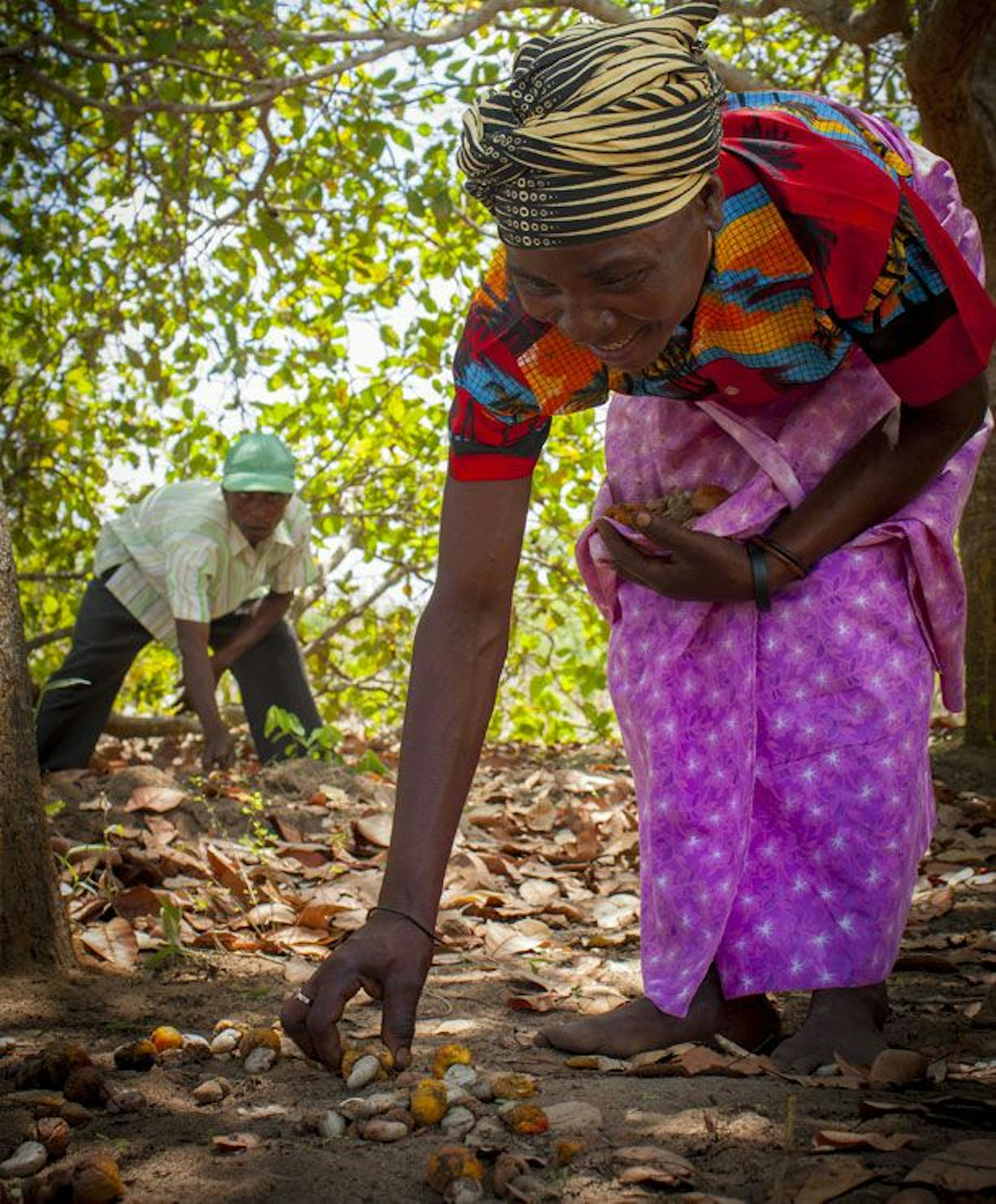Nuts & Oils

Overview
Nuts and oils are grown in diverse climates, mostly by smallholder farmers. The largest producers of tree nuts are the USA, China and Türkiye, while China and India lead in peanut production.
Fairtrade supports smallholder producers of tree nuts, oil seeds, oil fruits, peanuts and soybeans across Africa, Asia and the Latin America and Caribbean. The most consumed tree nuts are almonds, cashews, walnuts, pistachios and hazelnuts.
Despite crop differences, cultivation and post-harvest tasks share commonalities. Nuts and oils supply chains often involve many intermediaries and regions, making them hard to trace. Despite rising demand, profits do not reach the producers as—mostly women—earn low incomes.
The salient issues in the nuts & oils sectors are (in the order of saliency):
- Gender equity
Women are essential in nuts and oils production, but face low incomes, limited land rights and unequal access to tools, training, and decision-making roles across the sectors.
- Living income & wage
Producers and workers often earn below living incomes. Income is unstable due to seasonal pay, rising costs, debt, and producers’ and workers’ weak bargaining power.
- Working conditions
Nuts and oils production is often informal, labour-intensive, and seasonal. Workers face poor conditions, lack working contracts, and endure long hours.
- Health
Workers face health risks including musculoskeletal pain, burns, and toxic exposure. Risks stem from heavy labour, poor ergonomics, lack of PPE, and harmful substances.
- Child rights
Child labour has been identified in the production of Brazil nuts, coconuts, olives, peanuts, and sesame. In some cases, children can lose years of education.
- Forced labour
Forced labour has been identified in the production of Brazil nuts, chestnuts, cashews, peanuts and sesame. Harvest workers may face debt bondage through loans and restricted mobility.
- More information on risks in nuts & oils

Root causes
Patriarchy: Patriarchal norms in this sector limit women to low-paid manual tasks and exclude them from decision-making. Barriers to credit, land, and markets, plus domestic duties, reduce income and increase vulnerability (Wal 2021; ILO 2018).
Climate change: In many nut and oil producing regions, agriculture is highly climate sensitive. In the MENA region, where 70% of farming is rain-fed, warming may reduce water by 15–45% and seriously harm rural livelihoods (Waha et al. 2017).
Unfair pricing and purchasing practices: Power and profits in nuts and oils supply chains are unevenly distributed as producers often depend on traders who set prices. Research shows that for example in Brazil nut and argan oil supply chains, rising prices have mostly benefited others than the harvesters and workers.
Background data on nuts & oils (*Global Volume / **Fairtrade Volume)
Largest tree nut producer countries*
- US (39%)
- China (12%)
- Türkiye (10%)
- Others (39%)
Tree nuts include almonds, Brazil nuts, cashews, hazelnuts, macadamia nuts, pecans, pistachios and walnuts, for example.
Source: INC 2024.
Dominant production model in shea butter*
million women in rural communities across 21 African countries individually collect fresh shea fruits and kernel for processing.
Source: Global Shea Alliance n.d.
Fairtrade certified producer organisations**
Data from 2024.
Fairtrade certifiable production**
metric tonnes in 2023.
Farmers in Fairtrade organisations**
Data from 2023.

Stay updated
Partnering for change
Companies can be part of the solution by identifying and addressing the most serious risks and root causes in collaboration with farmers, workers and other affected people. Sign up to receive updates as we add new information to this Map, or to hear how Fairtrade can support your corporate sustainability due diligence.
Map View